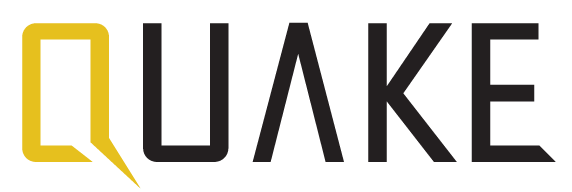This article was written by Quake Capital’s Founding Partner Glenn Argenbright. Glenn has founded over a dozen startup ventures, resulting in three public offerings, 9 exits, and billions in shareholder returns.
In my work advising startups, I’ve been called upon to review thousands of pitch decks, and through that process, certain universal truths and mistakes show up over and over. As an example, the use of too much text and the use of too many slides comes to mind — though thankfully notable experts such Guy Kawasaki have worked tirelessly to rid the planet of such errors.
Unfortunately, not all presentation faux paus are treated equally, and it’s my view that the closing slide (aka The Ask), is rarely given it’s proper due. In fact, I believe The Ask is one of the most important slides in any deck. However, despite its importance, this section of most presentations is almost always handled poorly.
As it turns out, those of us who invest in and advise startups for a living may share in the blame. I know or collaborate with many of the leading “experts” in startup acceleration and mentoring. I’ve also worked with some of the largest programs and attended tons of startup events, weekends, boot camps, and various and sundry early stage coaching events. In addition, I’ve read every book I could get my hands on providing any insight into the topic of pitching. Unfortunately, across the board, I think they pretty much all fail when it comes to The Ask.
Now don’t get me wrong, there are some excellent resources out there. Books like Get Backed (by Evan Baehr and Evan Loomis) offer some outstanding input, but even they don’t go far enough in my opinion.
Here’s where it all goes off the rails. Most advisors, accelerators, books, and even VCs tell you to include basic things like the “terms” and “use of proceeds.” OK, sure — why not — but that’s not really an “Ask.” That’s a list. Founders (and I’m speaking to you directly now) — you need to remember that this is your last chance. Your last chance to summarize your strengths. Your last chance to show your passion. Your last chance to actually sell something — and if you’re raising capital, then trust me when I tell you that you’re selling. SO SELL !!!
By all means list out what you’ll use the capital for. By all means tell them what the terms are — — but please don’t forget to set the hook. Most people basically read this slide with no emotion, no passion, no value. Personally, I’ve never used that approach and I’ve never seen it work for others, so I won’t start advocating it now.
So how else can you do it?
Well, for my part, I like to start off by summarizing the key differentiators and history of my company. Something like:
“With initial funding of just $150,000 we built (a revenue pipeline of X, recurring revenues of X, or an audience of X users, etc.) and over the next 12 months we will do Y (insert great metric here).”
I then like to remind my audience of the market opportunity, and I like to reinforce my company’s role in it. An example might look like:
“We have now reached (an inflection point, critical juncture, historic moment, etc.) in the business with ( a mature pipeline valued at over $X, a distribution agreement in place giving us access to over 30% of the global market, a patent award giving us a substantial market advantage, etc.)”
I would go on to add a couple connecting points to carry me to my Raise Components:
“But we need additional capital to (tie this to whatever points you make above).”
Now you can position the raise:
“Toward that end, we are looking to raise $750K through a convertible note with a 20% discount and a pre-money valuation of $100 million dollars.”
And here is a good place to bring up any positives of the raise itself:
“Of that, roughly 1/3rd or $250K has already been committed.”
Now you’re ready for your list.
“Funds will be used to X, Y, Z .”
But don’t just present the data. Be sure to tell them why.
“Which will allow us to (build on our early market lead, continue and accelerate our already impressive MoM growth, leverage our rapidly increasing revenue pipeline, achieve cash flow breakeven by 2018, etc.).”
And whatever you do, don’t forget to ask for the money or whatever it is you need. I suggest you align this portion with your personality and the personality of the business. Here are a few examples:
Soft Touch — — “If you’d like to help us achieve these goals…
Medium Touch — — “If you’d like to be part of an opportunity that has seen outstanding growth every single day since inception…
Aggressive — — “If you’d like to invest in a company with a proven track record that is projected to grow by 25X over the next 18 months, then please seek me out at the end of today’s presentations. I’d love to tell you more about X and our Y — or whatever closing comment you want. Thank You.”
The Ask is critical. Don’t waste it.
In a way, it should mirror your elevator pitch in that it should convey value in a very short span of time (maybe 10 to 15 seconds), followed by the basic elements of the raise and its purpose. Done right, your audience should be able to zone out for half of your presentation (far more common than you might think), and still see the value of investing if they wake up in time to catch this slide. Worst case, you’ll end on a high note touting your achievements, rather than an ambiguous list of expenses and terms.


